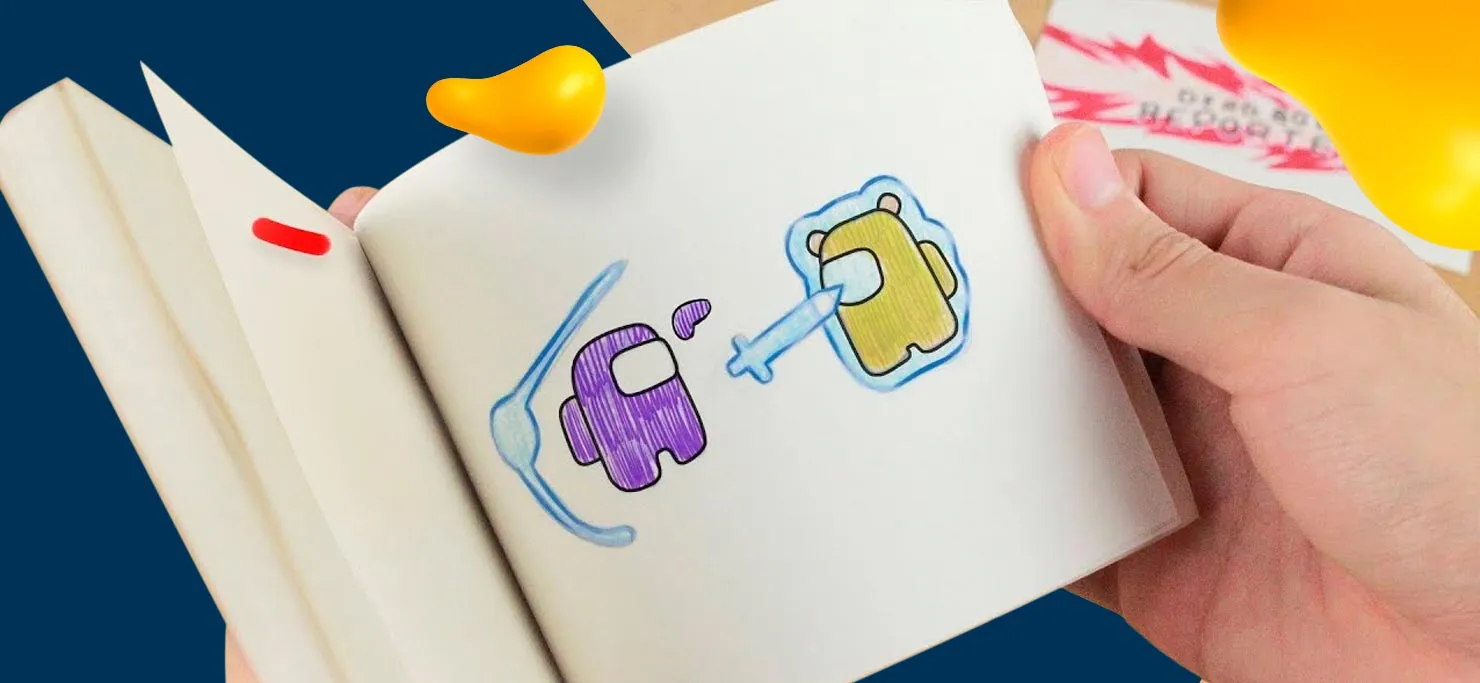Marketers typically aren’t designers, which means that you may not be abreast of all of the creative jargon out there, or the art methods that comprise those creative endeavors. For example, there are two words that feel like synonyms but are actually two completely different things.
Did you know that there is a subtle difference between motion graphics and animation? After reading our last blog, you may have asked yourself what the big difference is, and this article will answer that exact question. Especially because it’s one that we get pretty often.
So, let's settle the score once and for all.
What is motion graphics?
Motion graphics are animated graphic designs. We’ll use the same example that we did in our last article. Think about the beginning sequence of Star Wars, the moving yellow letters against the starry black background, seemingly disappearing to a point far, far away. This is motion graphics.
Another great example of motion graphics is this Porche commercial that takes viewers through car evolution without any fancy camerawork or live-action sequences. These are motion graphics.
The easiest way to remember what they are is by remembering three words: Design in motion.
What is animation?

Animation is the umbrella term that motion graphics live under. Animated videos use a rapid reel of images in quick succession to make inanimate objects move. For example, in traditional animation, artists would have to paint and draw hundreds of thousands of scenes, shot frame by frame, just to make it look like an animated figure is running through a forest.
According to The Norman Rockwell Museum, for every second of animation in Disney’s Snow White and the Seven Dwarfs, 12 to 24 illustrations were needed.
3D animation and computer graphics have made animation techniques much easier to execute, but the result is just as visually appealing.
Different types of animation produce different results. Here are some that fall under the umbrella along with motion graphics.
Traditional: Disney’s Snow White is the best example of this. It took hundreds of artists three years to make this dream come true.
Stop Motion: Think of those claymation Christmas classics that we all love to binge in December. This is stop motion animation. It is when an animator moves an object in tiny increments to make it look like the object is moving when the images are played very quickly frame by frame.
2D: This form of animation aims to make otherwise inanimate objects move in a 2D environment. Unlike claymation, 2D animation may involve artists hand rendering animated characters frame by frame. Cartoon Network circa the early 2000s could primarily be considered 2D, along with The Flinstones, Looney Toones, and Hey Arnold.
3D: Primarily, would be accomplished by using computer graphics. The best way to think of it is by remembering that the goal of 3D animation is to make objects move through a seemingly 3-dimensional space. Great examples of 3D animation are WALL-E, Monsters, Inc, Frozen, and Toy Story.
Motion Graphics: Title sequences (like the one in Star Wars or the credits at the beginning of a movie or show). Think of motion graphics as graphic design in motion. Motion graphics designers can also be considered animators.
<div class="c-blog_comp-cta cc-component-1"><div class="c-blog_comp-cta-left"><div class="c-blog_comp-cta-left-wrap"><img src="https://global-uploads.webflow.com/61cdf3c5e0b8155f19e0105b/6334d81a29c751ccd8c26638_brain-orchestra.png" loading="lazy" alt="" sizes="(max-width: 479px) 93vw, (max-width: 767px) 96vw, 363px" srcset="https://global-uploads.webflow.com/61cdf3c5e0b8155f19e0105b/6334d81a29c751ccd8c26638_brain-orchestra-p-500.png 500w, https://global-uploads.webflow.com/61cdf3c5e0b8155f19e0105b/6334d81a29c751ccd8c26638_brain-orchestra.png 500w" class="c-blog_comp-cta-left-img"></div></div><div class="c-blog_comp-cta-right"><div class="c-blog_comp-content"><div class="c-text-wrapper cc-mb-32"><div class="c-title-4 cc-bold">Ready to engage your audience on a whole new level?</div></div><div class="c-text-wrapper"><div class="c-text-2">Stay ahead of the latest design trends and stand out in your market, no matter how saturated it is.</div></div></div><div class="c-blog_comp-wrapper"><a href="/2022-life-changing-design-trends" class="c-button cc-primary cc-inverted w-button"><strong>Download Latest Design Trends</strong></a></div></div></div>
Okay, so what is the difference between the two?
The honest answer here is that motion graphics videos are a form of animation, but not all animations are motion graphics. The video production strategies used in other forms of animation are distinctly different from those used in motion design.
Animation could be 2D, 3D, or stop motion. Motion graphics are typically 2D graphics and usually involve words and letters, and add action to otherwise stagnant graphic designs.
Motion graphics alone do not add to the overall narrative of a video, but animation does. GIFs, explainer videos, dynamic logos, moving banners on your website, animated website menus, movie credits, and the reel at the beginning of Marvel movies are all motion graphics.
Which one is best for marketing?

Marketers wear many hats, but the job really boils down to how well they engage their audiences. There are many ways to do this depending on the target audience, the chosen channel of communication, and how well they understand their market.
A marketer’s job revolves around data, which should be a good indicator of whether to use motion graphics or animation in your next campaign.
The main question to ask yourself is: Do I want to tell a story and create an entire narrative with this piece (animated Superbowl commercials, animated ad campaigns)? Or do I want to create an explainer video or a dynamic and livened web page?
The verdict? It’s almost a tie.
Motion graphics vs. animation is an all-encompassing topic. Instead of comparing the two of them, the real discussion should be where to use each one most effectively. Both animation and motion graphics open limitless possibilities for marketers, if they know when and how to use them.
If you want to enliven your ad campaigns or engage your internal team with motion graphics but don’t know where to start, Designity can take you there.
The moment you sign up with us, you will have access to a designated creative director whose job is to help you navigate the creative process and allocate creatives to your team from our creative pool. The best part is that your creative director remains your only point of contact: no managing, no delegating, no clogged calendar.
When you join Designity, anything is possible. Free up your calendar and sign up for your two-week trial today!


